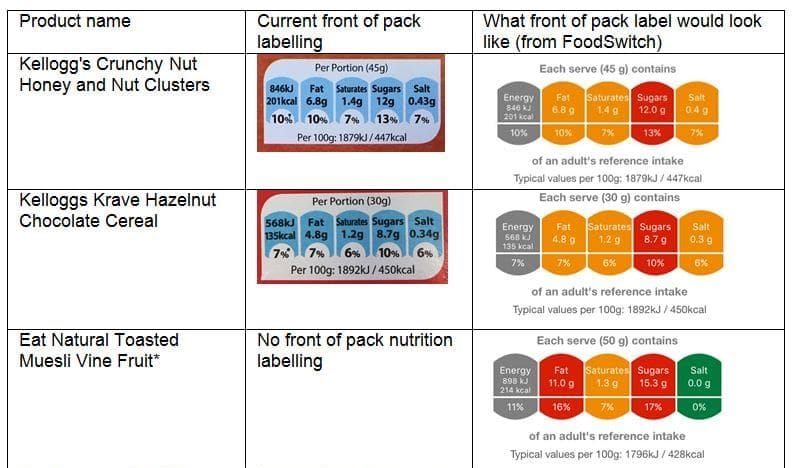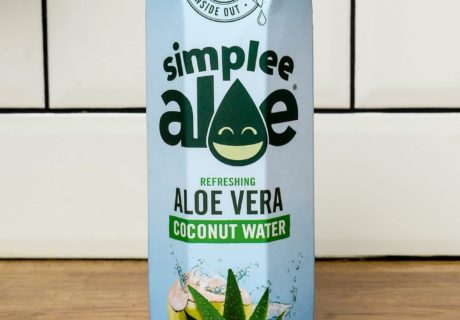Following new research by Action on Sugar, the organization is calling for colour-coded ‘traffic light’ front of pack (FOP) nutrition labelling to be introduced across all food and drink products.
In 2013, the Department of Health (DOH) announced a consistent FOP labelling system for fat, saturated fat, sugar and salt content, using red for high, amber for medium and green for low. But when Action on Sugar looked at 25 breakfast cereal manufacturers it discovered that whilst Bear, Jordans, Kellogg’s and Nestle do use FOP labelling, they don’t use DOH’s recommended colour-coding, making it hard for consumers to interpret the information and make informed decisions.
The group says that consumers could save themselves up to 45 teaspoons of sugar per month (182g) if they had access to consistent FOP labelling, allowing them to make informed decisions and switch to a lower-sugar cereal.
In addition, the research found that six “perceived healthy” cereal brands also failed to include the traffic light labelling. Some of these contained high levels of sugar, but others had low levels, which, the group says, they “should proudly display their labels on the FOP”.
Action on Sugar says: “Whilst it is encouraging that some branded companies use the Government recommended colour-coded FOP labelling, including Alpen, Honey Monster, Mornflake, Quaker Oats, Scott’s and Weetabix, there are at least three different label variations used by manufacturers on their products for consumers to understand and navigate – leading to further confusion and making it difficult to compare products. In comparison, all of the nine top supermarkets have colour-coded front of pack labelling on their own-label breakfast cereals across their economy, standard and premium ranges.”
“Shoppers should be seeing red, and they would be if manufacturers used the correct labels!” says Katharine Jenner, campaign director of Action on Sugar and FoodSwitch UK. “It’s scandalous that certain food manufacturers are still refusing to be transparent when it comes to front of pack nutrition labelling. If there is no front of pack label with one brand, shoppers should assume they are hiding something – so buy another brand instead.”
In a letter to The Grocer, Camilla Barnard, co-founder of Rude Health, wrote: “It is insulting people’s intelligence to think they need colour codes for salt, sugar and fat on the front of pack. We are all capable of reading the ingredients and nutrition information, which are clearly and proudly stated in large letters on the side of all our packs. We are selling good food. Not cigarettes. We shouldn’t need to put health warnings on the front of pack. Demonising ingredients encourages fear and a terrible relationship with food. What we need is food education, not scaremongering. A food fear culture is not helpful.”
And Praveen Vijh, co-founder of Eat Natural, says: “Here at Eat Natural we are extremely proud of the fact that our consumers love our bars, granolas and mueslis because they offer a wholesome, sweet, delicious treat – packed with honey, dried fruits, and chunky nuts. There is plenty of information on our packaging and website which explains the ingredients and nutritional information if consumers are keen to know more.”





